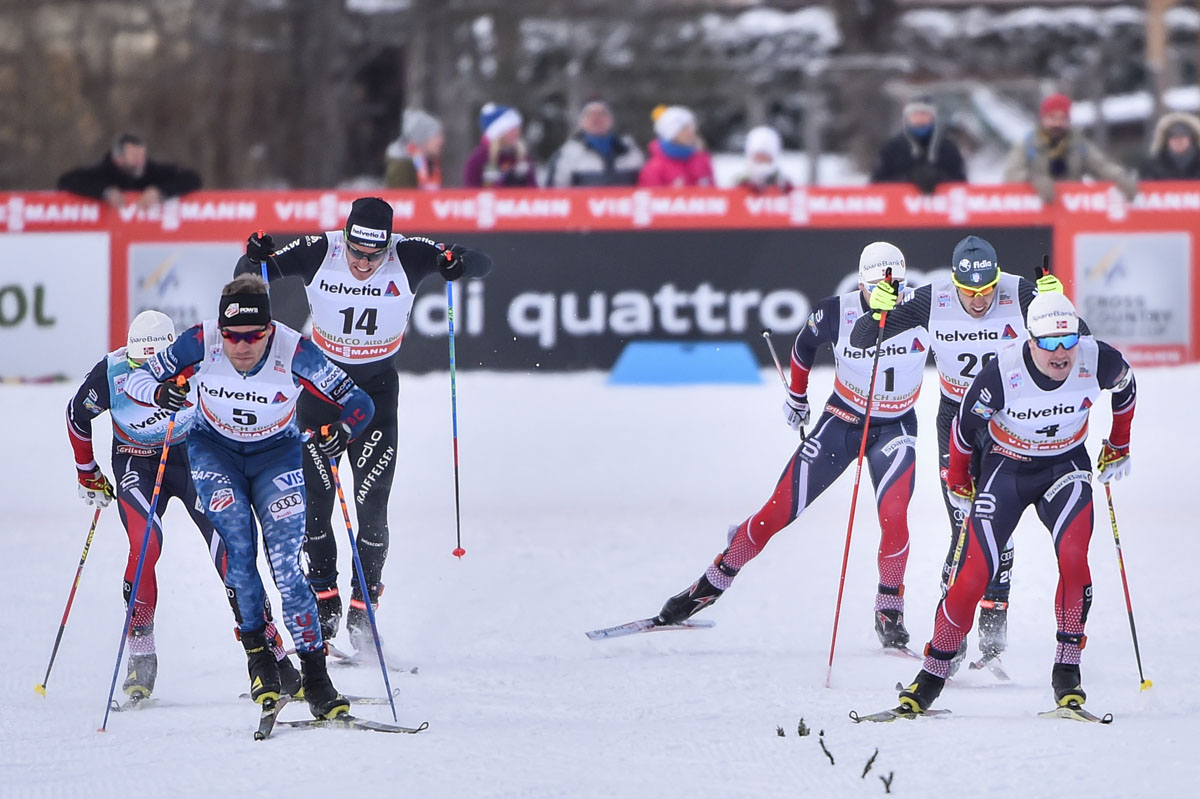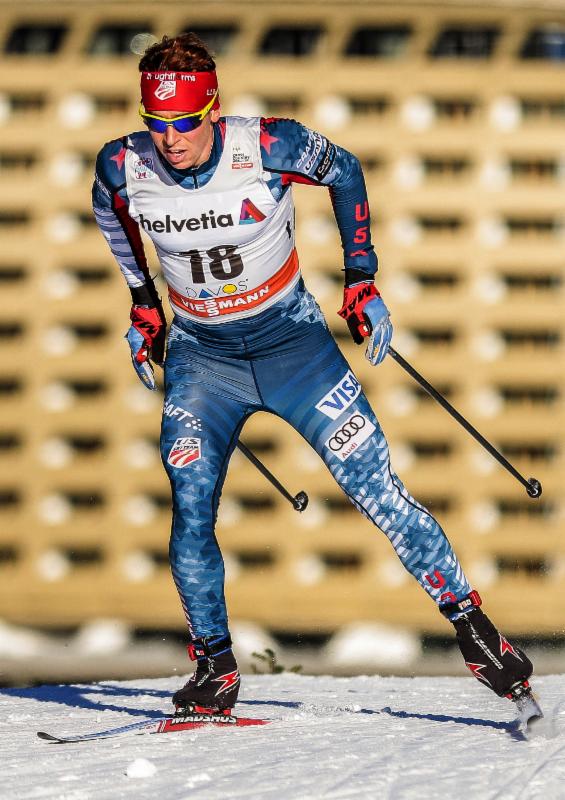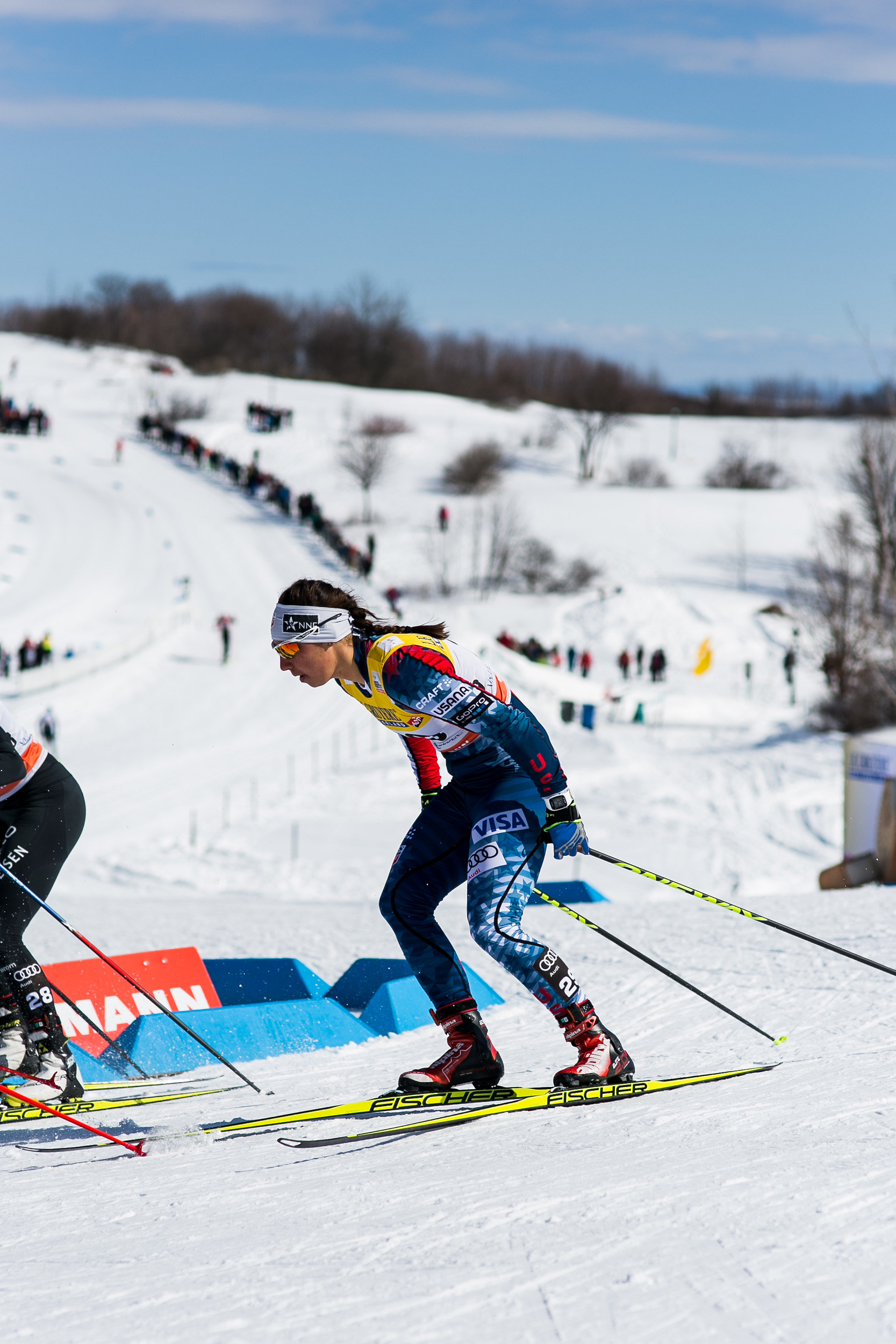
Welcome to World Cup Windup, where we check in with the top-10 teams from last year’s FIS Cross Country World Cup tour before the season starts with the Ruka Triple in Kuusamo, Finland, on Nov. 24.
***
Note: The following article has been updated to clarify that various World Cup organizers are responsible for paying travel and living costs for Continental Cup leaders (as well as Red Group athletes and paying for Nation’s Support: see section 10 of World Cup Rules), not FIS.
According to U.S. Ski Team (USST) Head Coach Chris Grover, the USST pays room, board and travel for its A-team, while B- and D-team members cover their own room, board and travel. “The USST supports all athletes (A, B, D, COC leaders) by paying for the coaches, techs, physical therapists, vans, gas, etc.),” Grover wrote in an email. “We spend the clear majority of USST resources on the infrastructure that supports all USA athletes on World Cup, and the NNF really helps these B and D Team athletes by significantly contributing to their individual room, board and travel. This has been the formula for many years now.”
***
USA
Overall in Nations Cup Last Year: Fifth
Women’s Ranking 2016/2017: Fourth
Men’s Ranking 2016/2017: 10th
Who’s Back:
World Championships medalists Jessie Diggins, Kikkan Randall, and Sadie Bjornsen; World Cup winners Simi Hamilton and Sophie Caldwell; top-six Tour de Ski finisher Liz Stephen; World Cup podium finishers Andy Newell and Ida Sargent; the whole crew. Rosie Brennan, Chelsea Holmes, Julia Kern, Erik Bjornsen, Scott Patterson, Noah Hoffman, and Paddy Caldwell will also be on the World Cup for Period I, according to head coach Chris Grover.
Who’s Missing:

No retirements. Several athletes who don’t have World Cup start rights in Period I will likely be racing at the domestic season openers in the U.S., including 2015 World Championships medalist Caitlin Gregg, top-30 World Cup finisher Caitlin Patterson, David Norris, and many others.
Pre-Season Results:
Chelsea Holmes won the 7.5 k skate race in Canmore, Alberta, earlier this month as part of the Frozen Thunder pre-season ramp-up.
Kikkan Randall placed eighth in a 5 k skate race in Gällivare, Sweden, on Friday, 27.2 seconds behind Charlotte Kalla.
In Beitostølen, Norway, Noah Hoffman finished 29th in a 15 k classic, two minutes and 25 seconds behind Martin Johnsrud Sundby. In the women’s 10 k classic, Stratton Mountain School (SMS) Elite Team’s Anne Hart finished 31st, 3:51.4 behind Marit Bjørgen.
Recent Drama:
Most of the World Cup team has recently arrived in Scandinavia to start the season. The Alaska contingent, including Sadie Bjornsen, Erik Bjornsen, Scott Patterson, Kikkan Randall, and Rosie Brennan already had snow at home, but a few other team members arrived in Scandinavia early to begin preparing on snow.
Andy Newell and domestic racers Erika Flowers and Anne Hart have been in Sjujøen, Norway, and Noah Hoffman joined them partway through the trip.
Kikkan Randall has been training in Gällivare, Sweden, where she will race this weekend. Randall recently did an “Ask Me Anything” on Reddit, where she talked quite a bit about pizza, but also plenty else.
Julia Kern was the latest addition to the World Cup roster. She will race in the World Cup opener in Finland and likely in the individual sprints in Lillehammer, Norway, and in Davos, Switzerland, as well.
“The top-20 ranked sprinters from the past season are additional quota spots to our normal quota, so we actually could use, technically use our maximum quota allotment of 10 athletes in Ruka,” U.S. Ski Team Head Coach Chris Grover said, referring to a FIS rule change that top sprinters would not count against a country’s quota in tours and mini tours. “So with Julia we have actually been talking all through the spring and summer about getting her some more World Cup start opportunities and experience based on the fact that she skied in her first World Cup at World Cup Finals and scored points right away. So she’s obviously on the track of a talented young sprinter and we want to give her more opportunities.”
Some of the other East-Coast skiers headed up to Foret Montmorency in Quebec to get in time on snow rather than traveling early to Europe.
Make sure to check out our recent podcast with Erik Bjornsen, and our piece chatting with Rosie Brennan about being an athlete representative to U.S. Ski & Snowboard.
More from Grover:
In a phone interview this week, Grover explained the U.S. team’s outlook this winter and into the future, as well as some team-selection specifics.
On World Cup Period I: “At least in my memory, this is probably the biggest team that we’ve ever had start on World World Period I, with 15 athletes. So that’s really exciting, and I think that’s a testament to the fact that the overall level of U.S. cross-country skiing has risen… At the same time, World Cup Period I is a really tough period of World Cup. It may be the most competitive period of World Cup that we encounter all season. It’s not unusual to have over 100 men on the line in Ruka, for example, and so to be successful right away in this first period of World Cup is always a real challenge, especially given the fact that lots of Scandinavians have been on snow for many weeks and had a chance to do more racing and such. But it’ll be a fun start to the season and really rewarding to have this many talented athletes representing the U.S.”

On team depth and what comes after this year: “We’re going to see the retirement, most likely, of some very key U.S.A. athletes after this season, so we need to be able to start actually looking down the road and developing the next group. One of the challenges we have, especially on the women’s side, is the fact that there’s really no room on the World Cup in terms of our start quotas, to be providing athletes with developmental start positions where they begin to learn how to manage their training and recovery and health and everything on the World Cup, and also learn how to effectively compete and the nuances of all these different World Cup venues… we have to try to find ways to do it while we can.”
On Hoffman, the only invited athlete on the Period I team whose World Cup support isn’t paid for by either the U.S. Ski Team or World Cup organizers: “Noah is an athlete who actually was starting to really come on in the middle of last season. He got a devastating flu, was out for a few weeks, and then we never really saw him rebound the rest of the season. So he also probably lost some points races from the whole second half of the season. I think most people would say Noah’s probably one of the strongest U.S. distance men, and so when we made this decision back in May that we would offer this spot this fall it was based on all of that information.”
On Kern’s prospects for the season: “I think Julia would say it’s pretty unrealistic for her to make an Olympic team. We have a cap put on the amount of sprinters that we’ll bring to the Games, and that’s five men and five women. Last year we had five sprint women meet the objective criteria from the World Cup between Jessie, Sadie, Sophie, Kikkan, and Ida. So it’s very unlikely, unless Julia is faster than one of those athletes — which is possible — but it’s pretty hard to make the team via that standard. Making the women’s sprint team in particular is for sure the hardest team to qualify for on the U.S.A. right now. So Julia’s got a shot like anybody else, but I think Julia would tell you that it’s a very long shot and instead of focusing on that, she’s more focused on the World Cup experience.”

On what he would tell other on-the-bubble women who didn’t get a World Cup Period I invite: “We definitely like to look at the points lists, they give us direction from time to time, but they’re really challenging in that the points that are awarded at a lot of races in the U.S. don’t really match up with the points that skiers are getting in Europe or that those same skiers are earning over in Europe…. for example, why aren’t we naming a tenth woman to start in the Ruka mini tour? The reason is there’s no place for them to go the next weekend. Ruka is a special situation because we can bring in these top sprinters from last year, but once we get to Lillehammer we’re down to seven start rights [for the women] per day, with a total of our nine-woman team over there, so athletes are starting to have to sit out races over there. The other thing I think most athletes have recognized is that the path for those athletes that are interested in qualifying for the Olympic Winter Games, the path toward qualification [through the World Cup] is generally more difficult than racing domestically, so athletes that would target the Olympics… I think many of them are aiming toward racing domestically in order to better their chances of making the team.”






